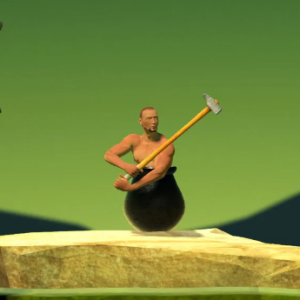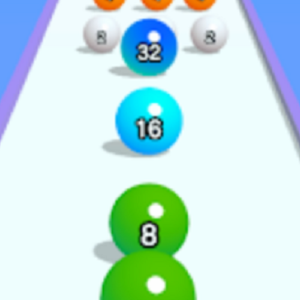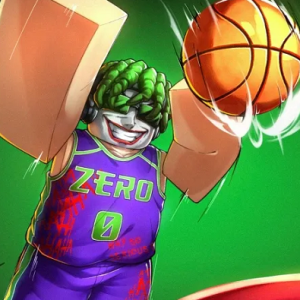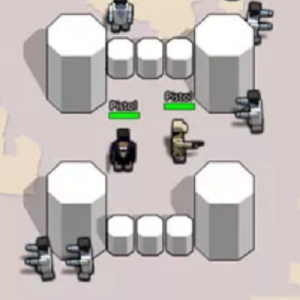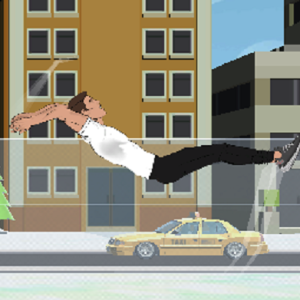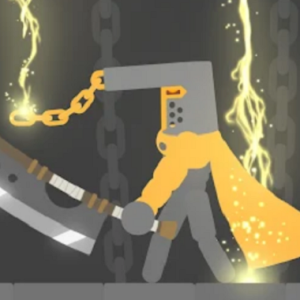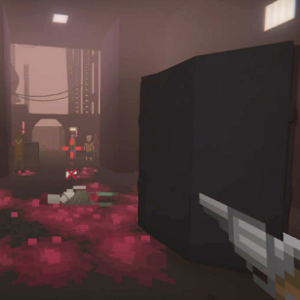Similiar games
Getting Over It is a physics-based climbing game where the player controls a man sitting in a cauldron, armed only with a large hammer to move upward through a strange landscape. The main objective is to reach the top of the environment, but the path is filled with rocks, trees, and artificial objects that make every movement difficult. The hammer must be used carefully to push, pull, and swing across obstacles, and progress is often fragile since one wrong move can send the player back to the very beginning. This structure creates a cycle of persistence and repetition that defines the entire experience.
Core Gameplay
The gameplay in Getting Over It focuses on using the hammer as the only tool for movement. Players must learn how to rotate, swing, and balance the hammer against different surfaces. The mechanics are deliberately awkward, which means progress depends on precision and patience. There is no save system to prevent falling, and mistakes can erase hours of effort in a moment. The environment is designed in a way that tests the player’s ability to adapt, as every new section introduces new shapes and surfaces that require creative movement to overcome.
Learning Curve
Since the game is built on challenging controls, the learning process is central to the experience. At first, players may struggle to make even small climbs, but over time they learn how to manipulate the hammer effectively. Success depends on focus and persistence rather than speed.
Key aspects of the learning process include:
- Practicing controlled swings for climbing steep edges
- Using momentum to launch upward over large gaps
- Balancing the hammer carefully on small surfaces
- Understanding how friction and angles affect movement
- Accepting failure as part of progress
Each of these skills becomes more important as the obstacles increase in size and complexity.
Difficulty And Setbacks
Getting Over It is known for its difficulty, as falling down is an inevitable part of the journey. The game challenges players with physical obstacles and with the mental pressure of losing progress. A single mistake can undo hours of careful climbing, which adds an extra layer of tension to every move. Unlike most games, there are no checkpoints or shortcuts, so recovery must always come from replaying the same sections. This balance of progress and failure keeps the challenge constant and forces the player to approach the game with patience and resilience.
Replay Value
The replay value of Getting Over It comes from personal growth and mastery. Every attempt teaches the player something new about movement, momentum, and control. Over time, players develop unique strategies and gain the ability to handle sections that once seemed impossible. Even though the structure of the game does not change, the sense of achievement grows with each successful climb. For many, the motivation is reaching the top and proving persistence against repeated failure. This makes the game both a test of skill and a measure of determination.


